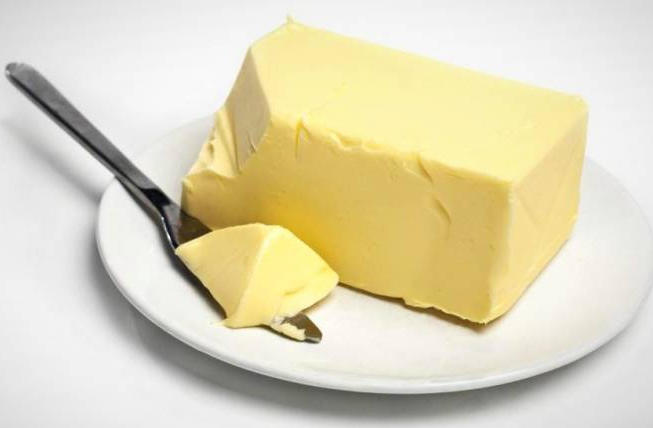As part of a balanced diet that includes a variety of healthy fat sources, such as olive oil, avocados, nuts, seeds, and fatty fish, butter may be healthy in moderation.

In addition to fat-soluble vitamins, cow’s butter contains some important nutrients for the body.
One tablespoon of cow’s butter contains 11% of the daily recommended vitamin A requirement. Vitamin A is one of the most abundant vitamins in cow’s butter.
Many fatty foods contain vitamin E, which is an antioxidant.
Eggs, meat, dairy products, and fermented foods provide vitamin B12, also known as cobalamin.
Known as menaquinone, vitamin K2 reduces the risk of heart disease and osteoporosis.
As one of the most complex fatty foods, butter is a rich source of fatty acids. There are more than 400 types of fat in butter, including saturated fats that make up a large percentage of the fat, and monounsaturated fats like linoleic acids.
Butter is a rich source of antioxidants: Butter contains carotene, which promotes the growth and repair of cells and reduces the risk of viral infections.
Butter’s nutritional value
| Nutrients | unsalted butter | salted butter |
| water (ml) | 17.94 | 15.87 |
| calories (kilocalories) | 717 | 717 |
| protein (grams) | 0.85 | 0.85 |
| fat (grams) | 81.11 | 81.11 |
| Saturated fat (grams) | 50.489 | 51.368 |
| monounsaturated fat (g) | 23.43 | 21.021 |
| Polyunsaturated fat (grams) | 3.01 | 3.043 |
| carbohydrates (grams) | 0.06 | 0.06 |
| Calcium (mg) | 24 | 24 |
| iron (mg) | 0.02 | 0.02 |
| Magnesium (mg) | 2 | 2 |
| Phosphorus (mg) | 24 | 24 |
| potassium (mg) | 24 | 24 |
| Sodium (mg) | 11 | 643 |
| zinc (mg) | 0.09 | 0.09 |
| Vitamin B12 (micrograms) | 0.17 | 0.17 |
| Vitamin A (micrograms) | 684 | 684 |
| Vitamin E (mg) | 2.32 | 2.32 |
| Vitamin K (micrograms) | 7 | 7 |
| Cholesterol (mg) | 215 | 215 |
Butter is not known to be safe, but saturated fat should be limited to no more than 1% of total calories per day, for example, if a person consumes 2,000 calories per day. The maximum amount of saturated fat he can consume per day is 20 grams.
Cow’s butter contraindications
Butter contains a lot of fat, so consuming too much of it can lead to obesity, high blood pressure, heart disease, and high levels of harmful cholesterol, among other problems. The consumption of butter in moderate quantities is recommended to avoid its side effects, as it is often used with white flour, which may be one of the main causes of weight gain. Butter can cause mild allergic reactions such as hives or more severe reactions such as breathing difficulties if a person is allergic to dairy.
Cow’s butter benefits: frequently asked questions
How does cow’s milk butter benefit you?
Butter made from the milk of cows fed grain or processed feed differs in its nutritional components and benefits from butter made from grass-fed milk. Fresh grass contains a higher amount of healthy fats such as omega-3 and linoleic acid, as well as fat-soluble vitamins and antioxidants such as carotenoids and tocopherols.
What is better, butter or margarine?
It is also known as hydrogenated vegetable oils or margarine. What makes it different from animal butter? There are positives and negatives to each, but they all contain a large amount of fat that may lead to weight gain, a precursor to heart disease. In addition to butter made from milk, margarine also contains saturated fat. Trans fats result from manufacturing processes that increase bad cholesterol levels and decrease good cholesterol levels.
To reap the benefits of butter and margarine, it is recommended that both be consumed in moderation and in variety to avoid exceeding the fat limit.
It is necessary to mention the importance of reducing saturated fat consumption, reducing trans fat consumption, and replacing them with healthy fat sources on the packaging of various types of butter, including saturated and trans fats, to compare their nutritional value. Use healthy monounsaturated and polyunsaturated fats like olive oil and other vegetable oils instead.
In conclusion:
The solid fat in cow’s butter is separated from the liquid called buttermilk by beating the milk, but butter can also be made from the milk of other mammals, such as sheep. It should be noted that there are many types of cow butter, including salted butter with more than 3% salt, that are different in saltiness.


